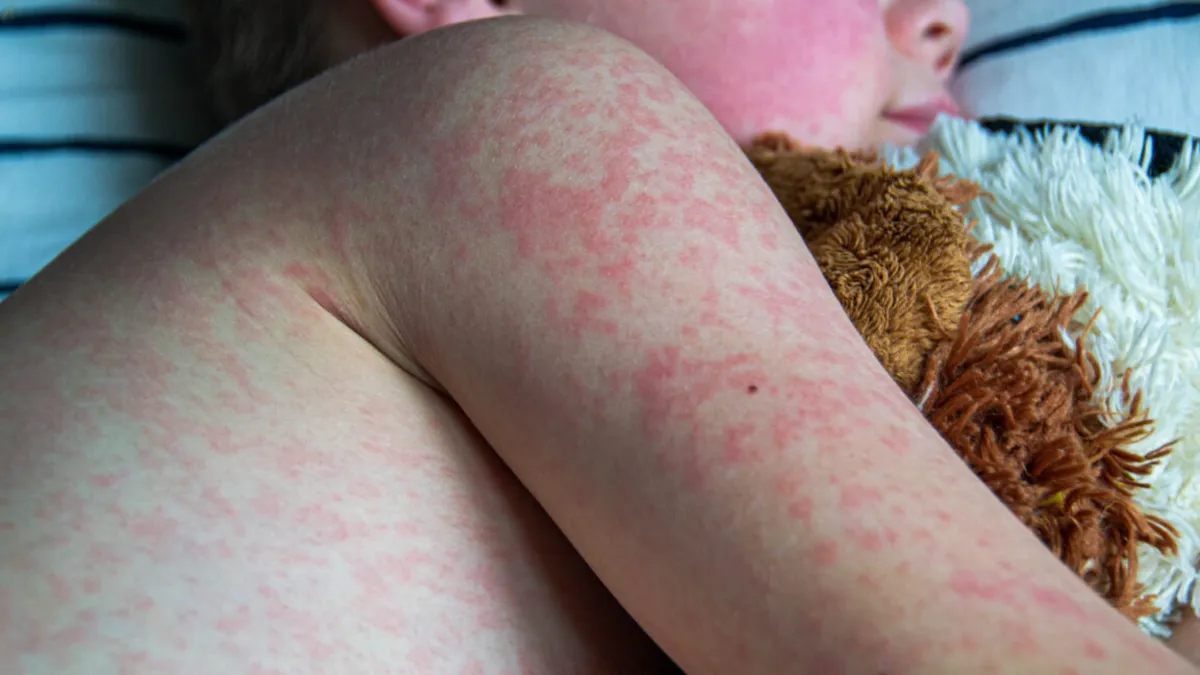
As of Friday, April 25, 2023, the United States has confirmed more than 900 measles cases since the beginning of the year. These cases span across 29 states, with a significant concentration in and around Texas, where a substantial outbreak continues to escalate within close-knit, undervaccinated communities. According to the Centers for Disease Control and Prevention (CDC), as of April 24, there were 884 reported cases nationwide. The Texas health department has since updated its outbreak total, adding 22 new cases to the previous count, raising the national total to at least 906 confirmed cases.
Most of the measles cases are occurring among unvaccinated children and teenagers. Since late January, Texas has reported a staggering 664 cases. Among these, 64 patients have required hospitalization, and tragically, two unvaccinated school-aged children with no underlying medical conditions have succumbed to the disease. Additionally, an unvaccinated adult in New Mexico has also died from the infection, bringing this year's measles death toll to three.
The current situation is alarming, as the number of cases and fatalities is breaking previous records. In the last 30 years, the only year with a higher tally of measles cases was 2019, which saw 1,274 cases primarily linked to extensive outbreaks in New York City that lasted 11 months. The United States is now on the verge of losing its elimination status for measles, a significant public health achievement reached in 2000 when the nation went a full year without continuous transmission of the virus.
Since 2019, vaccination coverage for the measles, mumps, and rubella (MMR) vaccine among US kindergartners has been on the decline. National vaccination rates dropped from 95 percent in 2019—the threshold necessary to prevent the spread of measles—to 92.7 percent in the 2023–24 school year, according to the latest available data.
It’s crucial to note that by April 26, 2019, the total number of measles cases had only reached 704. With this year's total already exceeding 900, the US is on track to potentially set a new high for measles cases. Prior to 2019, the highest annual total was recorded in 1994, when there were 899 cases—a figure that 2023 has already surpassed. The last recorded measles fatality in the US occurred in 2015, while the last child death from the disease happened in 2003.
Experts express growing concern over the possibility that the US may lose its elimination status this year, potentially allowing measles to circulate endemically once again. A modeling study published by researchers at Stanford University indicates that if current vaccination levels persist, the US could see approximately 850,000 measles cases over the next 25 years, resulting in around 170,000 hospitalizations and 2,500 deaths. More alarming, a 10 percent decline in vaccination rates could lead to an estimated 11 million cases in the same timeframe.
In a recent update, the CDC reiterated the urgency of increasing vaccination rates, stating that the US is heading back toward an era where measles is perpetually present and spreading. The rise in global measles incidence in areas frequently visited by US travelers, coupled with declining MMR vaccination coverage below the critical 95% threshold, heightens the risk of ongoing measles transmission within the United States. The CDC has urged for immediate action to bolster national and local vaccination efforts, emphasizing that increasing MMR vaccination coverage is essential to prevent future measles outbreaks.